The Grey Arab Mare
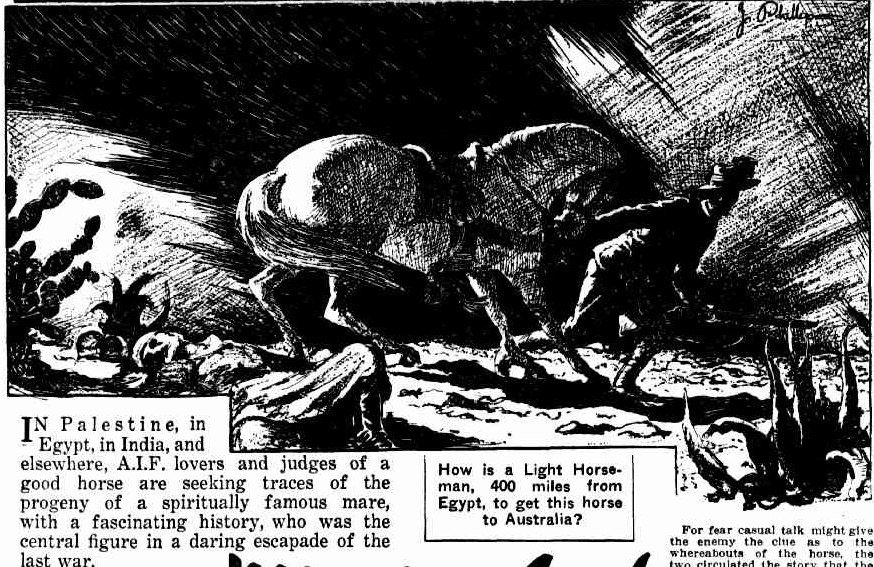
Janet Lane, Waler Data Base @ Facebook. Image: Smith’s Weekly (Sydney), 18th January, 1941.
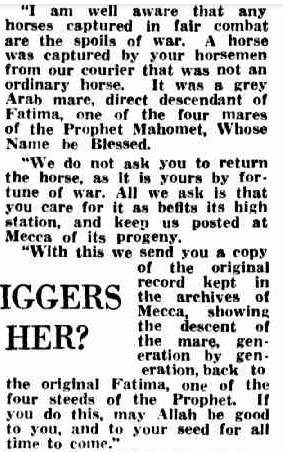
The grey Arab mare is a well-known story brought up on our Facebook page recently by Merilyn Stewart. I promised a post but along came other matters – perhaps fate had a reason as recently by sheer luck I found this article which may solve the mystery of what happened to her.
But – there are several theories of what happened to her, one that she was smuggled into W.A. either during or after WW1.
Image: Smith’s Weekly (Sydney), 18th January, 1941.
Article about the mare written from an interview with Chauvel when he visited W.A. This is the letter written by the Chief Officer at Mecca to Chauvel.
During WW1 a grey Arabian mare – one of the best of her breed – was captured by Lt. Charles Foulkes-Taylor of the 10th Light Horse, the famous West Australian regiment. Syria, Mesopotamia (Iraq), Palestine and Persia (Iran) were renowned for the best Arab horses in existence and rarely let any out of their countries – and then only male horses.
Before long Chauvel was sent a letter by the Chief Commanding Officer at Mecca, borne to him under a flag of truce, but as Chauvel was away at the time, the letter was passed to him on return with a copy of her incredible pedigree, going back 1,200 years.
She was caught when a brave man of the Ottoman forces, an Arab, made a dash from Duma, north-east of Damascus, to carry a message to Turkish HQ. It was the night of October 2nd, 1918. The little town was surrounded by some men of 10th who posted sentries. Charles Foulkes-Taylor, who’d been a scout for the 10th on their way to Damascus, set off in pursuit. The escaping man refused to surrender and was shot. Foulkes-Taylor caught the mare, immediately recognising her as an excellent type.
He wrote to Chauvel “We saw an Arab in gorgeous dress galloping towards us on a grey animal and another Arab just behind him, also on an Arab…On seeing us, he turned and tried to rejoin his folk (the Turks), his groom got away but I was able to get within 20 yards of him and called on him to halt in Arabic and Australian. I shot him and caught his mount, a beautiful Arab mare and rode her for the next day or so and decided to make every endeavour to bring her out to Australia.”
Image: Australian Army Museum of W.A
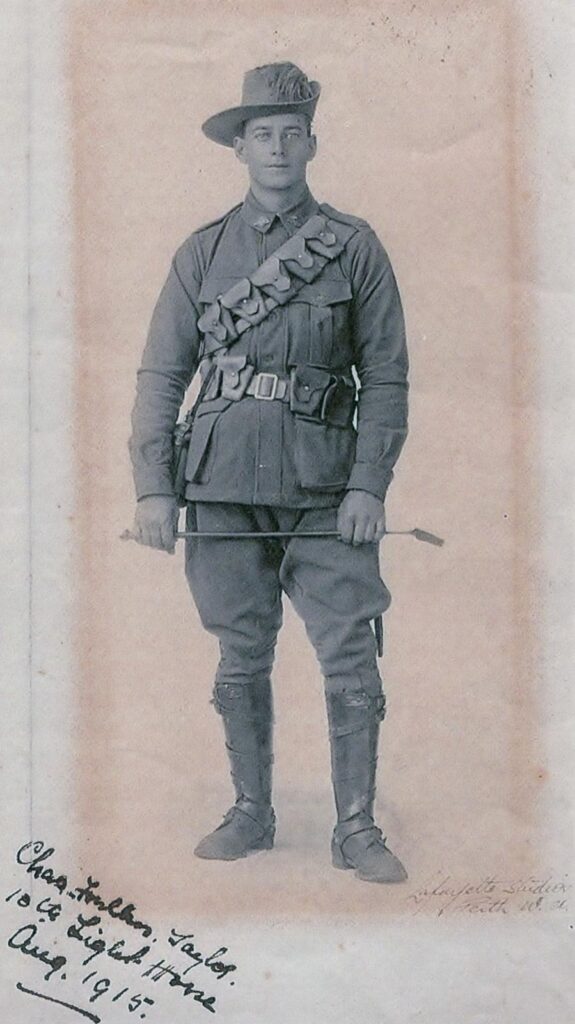
Foulkes-Taylor named the beautiful four-year-old mare Damascus. Images below from Museum of WA show the whip carried by the mare’s rider and the breastplate the grey Arab mare was wearing when captured. Both are leather with silver ornamentation.

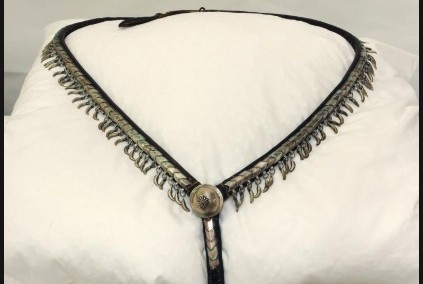

Chauvel promised the Arab people he’d find and care for the mare. He immediately ordered all captured Arab mares to be handed in, in case she was stolen or shot in war. He wanted her brought to Australia with some of the many Turkish horses captured in the war, many were Arabs.
Many letters were sent to newspapers here asking for this mare and the best of the captured Turkish horses to be brought Australia, and it was brought up in Parliament by Atkinson M.P., but of course, like pleas for our own horses to come home, all fell on deaf political ears – those of Pearce, the Acting PM.
Chronicle, 3rd April, 1920
In October 1919 an “Endurance Trot” of 300 miles (482.8km) under cavalry conditions (carrying weight) in the USA was won by an Arab mare, Ramla. This kicked off their popularity for endurance races, and it was much reported here, lamenting we’d missed out on good lines by refusing to bring some captured horses here after WW1.
It took 5 days of hard riding; only 8 horses finished out of 18 starters.
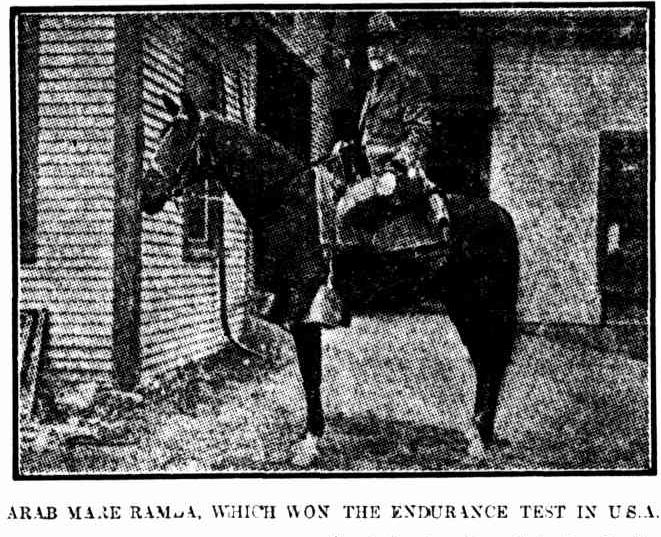
Chauvel was only too aware of the honour bestowed on his army by the Chief Officer in Mecca saying the Australians could keep the mare as a prize of war, but to please care for her, and tell them of any progeny. The mares descended from the five mares of the Prophet Mohammad – as this mare was – were normally forbidden to be sold or gifted to non-Muslims. We’d bought many Arab stallions over a century from India as they had a big horse trade from Arab countries – in fact the Australian TB studbook has more Arab blood than any other because of this. They were very good horses with plenty of bone and incredible stamina, most under 14.2hh; quite different in appearance to many of the breed seen in the west of the modern era.
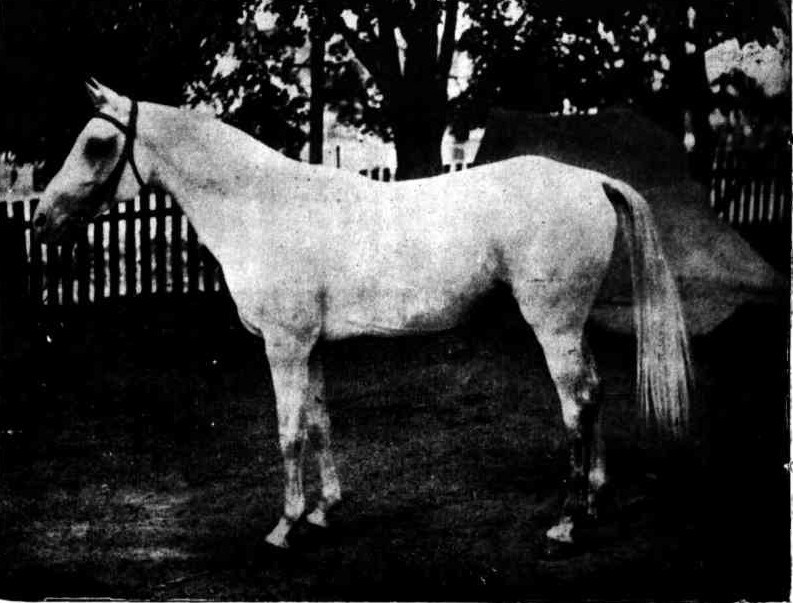
Delos, 13.3hh, an Arab stallion imported by J.S. Love of Queensland, one of our biggest horse breeders and exporters. He went to Dalgonally Station to breed horses for export. He’d won many races in India.
Typical of the many Arab stallions we imported over the years from India (to where they’d been taken from the Middle East).
North Queensland Register 7th April 1902
A Turkish Ambulance unit captured by the Australian Light Horse at Romani, lined up ready to go to Railhead en route for internment in Egypt. Note the white armband bearing the red crescent being worn by the captured unit. Image from the collection of Major David Gifford Croll, 2nd Light Horse Field Ambulance. 1916. Romani, Sinai, Egypt. AWM
To show the little Arab type horses used by some of the Turks.
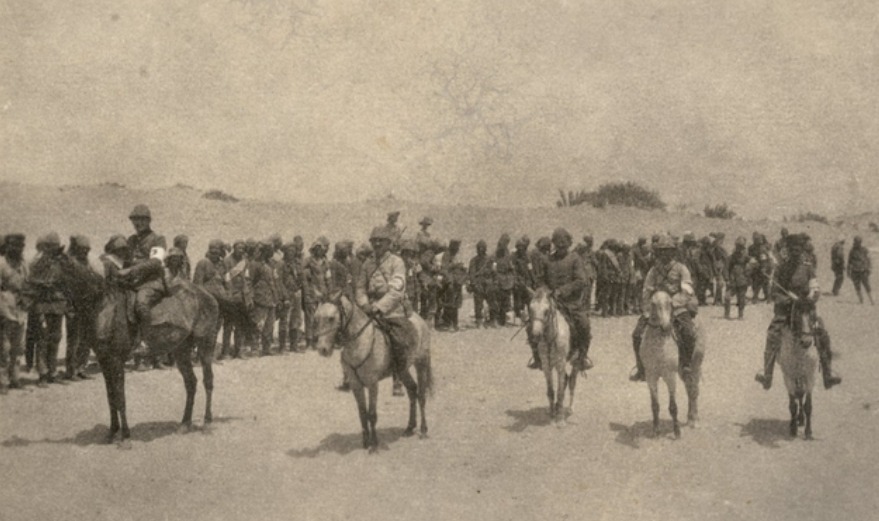
However, when Chauvel wanted the grey Arab mare, she was suddenly missing! Foulkes-Taylor probably wasn’t sure why Chauvel wanted the mare – would he hand her back as a sign of goodwill? Keep her himself? (by the way, Chauvel had a couple of his army geldings smuggled out from the Middle East to England at end of the war).
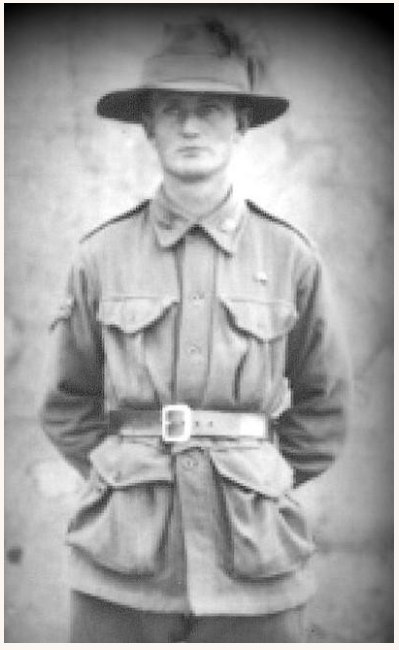
Collections WA: Photograph of 1316 trooper Basil Morton Craig, MM from York, 10th Reinforcements, enlisted 14 July 1915, returned 29 June 1919.
Foulkes-Taylor and his mate Lance-Corporal Basil Craig got busy disguising the mare. Her mane was shortened. The beautiful silver plates on her feet, which covered the frog to prevent stone bruises, were removed and heavy army shoes put on. Her coat was hurriedly dyed with permanganate of potash, used in the war as an antiseptic, so she went a brownish colour. Her tail was hacked to Yeomanry length and brushed roughly to make it fluff out. When scouts came to inspect their horse lines, not trusting their make-up job, the mare was taken by Craig to an Arab farmer 5 miles south of Lake Huleh. The intention was to take the mare to Egypt. Then it appears Craig and Foulkes-Taylor were busy elsewhere as the war was mopped up.
Chauvel didn’t give up, he went to a lot of trouble to track the mare even looking for the Arab farmer who’d disappeared off the face of the earth (if he ever existed); and was so touched by the esteem held for this mare that he made sure A.I.F. men had a commission to ask about her in WW2 when they were stationed in the east, even although she would probably have passed on by then. The mystery remains… although we did sell a very good Arab mare for a very good price in Egypt shortly after WW1…
The Register (Adelaide), 2nd April, 1919.
Was this the Grey Arab Mare?
